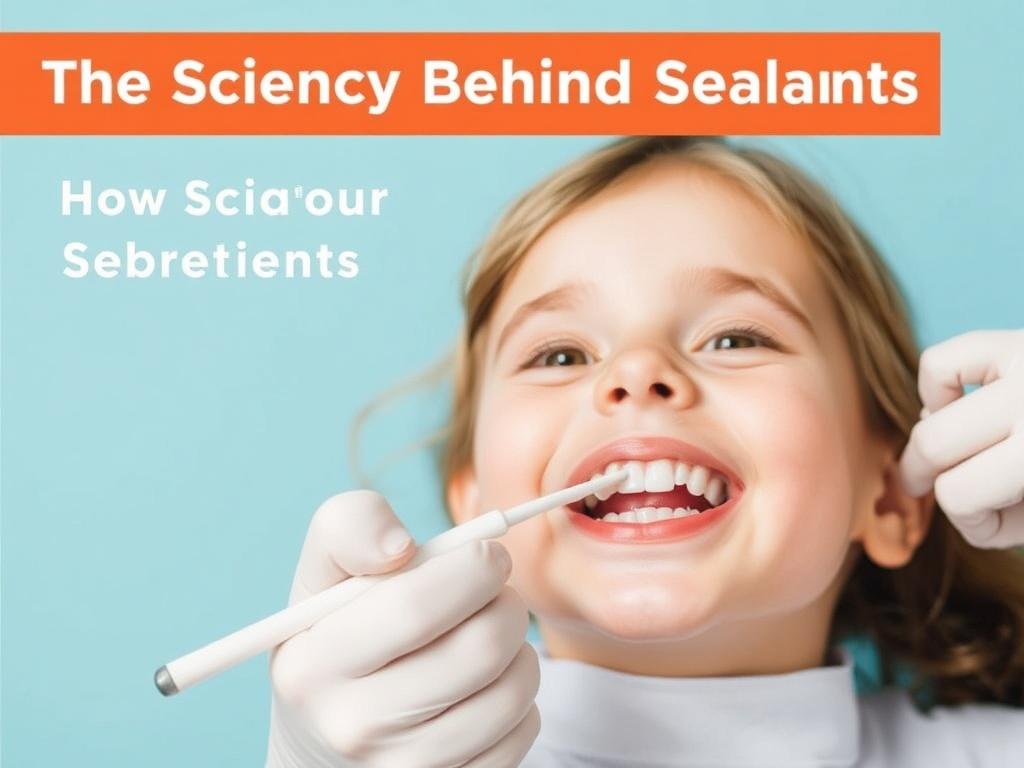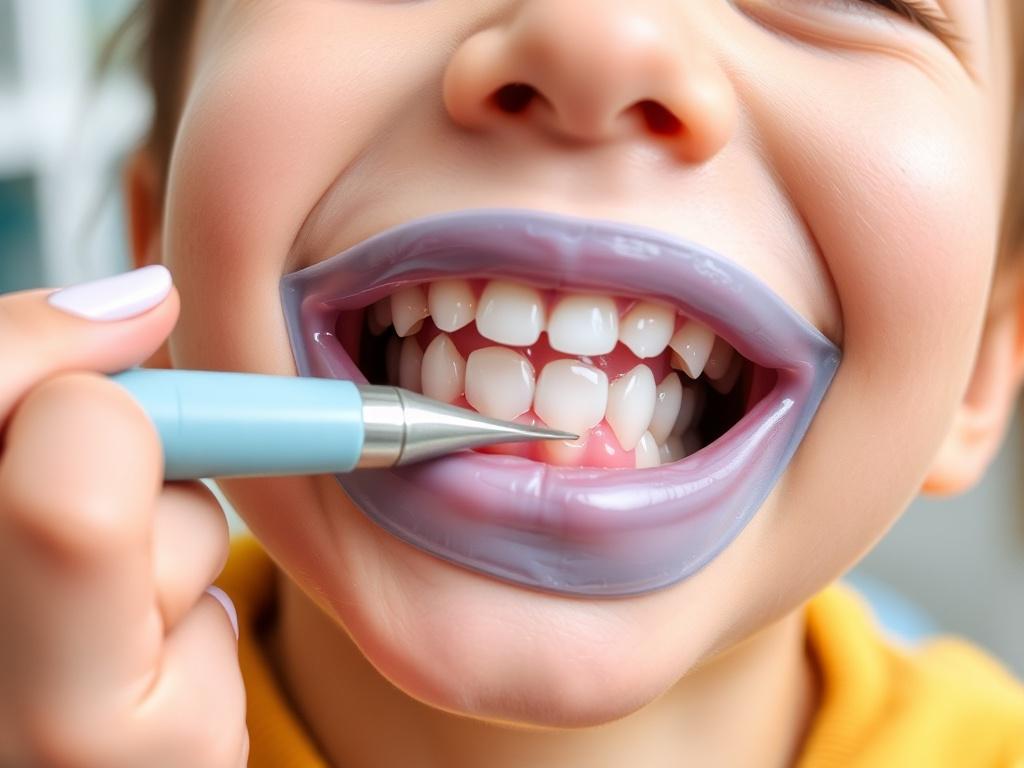When it comes to children’s dental health, parents often focus on daily brushing and regular dentist visits. However, there’s an amazing preventive treatment that many might overlook: dental sealants for children. These thin, protective coatings can make a huge difference in the fight against cavities and tooth decay. It’s a quick and painless method that provides long-lasting protection for kids’ teeth, especially their molars, which are vulnerable to cavities due to their grooves and pits.
In this article, we’ll dive deep into everything you need to know about dental sealants for children, explaining how they work, why they’re important, and what parents should expect. We’ll also explore the benefits and address common questions so that you can make informed decisions about your child’s dental care. Let’s explore the world of dental sealants and how they can help maintain strong, healthy smiles for your little ones!
Содержание
- 1 What Are Dental Sealants?
- 2 Why Are Dental Sealants Important for Children?
- 3 How Are Dental Sealants Applied?
- 4 Are Dental Sealants Safe for Children?
- 5 Common Questions Parents Ask About Dental Sealants
- 6 Tips for Parents: Maximizing the Benefits of Dental Sealants
- 7 The Science Behind Sealants: How Do They Protect Teeth?
- 8 Addressing Myths About Dental Sealants
- 9 How to Talk to Your Child About Dental Sealants
- 10 Finding the Right Dentist for Dental Sealants
What Are Dental Sealants?
Dental sealants are thin, plastic coatings applied directly to the chewing surfaces of the back teeth, such as molars and premolars. These teeth have deep grooves and fissures that often trap food particles and bacteria, making them difficult to clean thoroughly with a toothbrush alone. This trapped food and bacteria can lead to tooth decay and cavities. Sealants act as a barrier, sealing the grooves and protecting these vulnerable areas from decay.
The process is quick, painless, and non-invasive, which makes it particularly suited for children. Typically, dental sealants are applied by a dentist or dental hygienist during a routine checkup. The tooth is cleaned, dried, and then the sealant liquid is painted onto the tooth surface and hardened with a special light.
Materials and Types of Sealants
There are a few different types of dental sealants, depending on the material used:
- Resin-based sealants: These are the most common and durable type, providing strong protection.
- Glass ionomer sealants: These release fluoride, which can help strengthen tooth enamel but are usually less durable than resin-based sealants.
Choosing which type of sealant is best depends on your child’s specific dental needs and your dentist’s recommendation.
Why Are Dental Sealants Important for Children?

Children’s teeth are particularly vulnerable to decay, especially the first permanent molars that come in around age six. These teeth have complex grooves, making them prone to cavities. Keeping children’s teeth healthy is crucial to ensure they maintain proper chewing function, speech development, and overall oral health throughout life.
Dental sealants offer several benefits for children including:
- Cavity Prevention: Sealants reduce the risk of cavities by up to 80% in molars, making them one of the most effective preventive dental treatments.
- Protection of Vulnerable Teeth: Since children’s molars have deep grooves, sealants help close these areas, making them easier to clean and less likely to trap food.
- Cost-Effective Prevention: Applying sealants is less expensive than filling cavities and reduces the chances of needing more extensive dental work later.
With children often being less meticulous with brushing and flossing, sealants provide an added layer of protection that is invaluable for their early dental health journey.
When Should Children Get Dental Sealants?
Sealants are typically applied soon after the child’s permanent molars come in. Here’s a general timeline:
| Age | Tooth Type | Sealant Application |
|---|---|---|
| 6-7 years | First permanent molars | Sealants applied as soon as the teeth erupt |
| 11-14 years | Second permanent molars | Sealants applied shortly after eruption |
It’s important to have these teeth sealed as soon as they appear because the first few years after eruption are when molars are most vulnerable to decay.
How Are Dental Sealants Applied?
0
The application process is simple, painless, and takes only a few minutes per tooth. Here’s what you can expect:
- Cleaning the Tooth: The dentist or hygienist cleans the tooth surface to remove all food and plaque.
- Drying the Tooth: Teeth must be dry so the sealant will adhere properly. Cotton rolls or suction devices are used to keep the area dry.
- Etching the Surface: A special acidic solution is applied to roughen the tooth surface slightly, which helps the sealant bond better.
- Rinsing and Drying Again: The tooth is rinsed and dried to remove the acid and prepare for sealant application.
- Applying the Sealant: The sealant liquid is painted onto the tooth grooves.
- Hardening the Sealant: A special curing light is used to harden the sealant quickly.
- Checking the Seal: The dentist will check to make sure the sealant is properly applied and that the bite feels normal.
Since the process is fast and straightforward, it’s perfect for young children, even those who may be anxious about dental visits.
Can Sealants Fall Off or Need Replacement?
Yes, although sealants are durable, they can wear down or chip away over time. Regular dental checkups allow your dentist to inspect the sealants and reapply them if necessary. With good oral hygiene and regular dental care, sealants can protect teeth effectively for several years.
Are Dental Sealants Safe for Children?
Many parents worry about safety whenever new treatments are introduced. Rest assured, dental sealants for children have been extensively studied and are considered very safe. They do not contain harmful substances, and the amount of any materials used is minimal and well within safety limits. Additionally, sealants are BPA-free or contain BPA in such negligible amounts that pose no health risk.
Moreover, sealants reduce the need for fillings and dental surgeries, which involve more exposure to dental materials and procedures. In this way, sealants contribute to safer oral health care for children.
Common Questions Parents Ask About Dental Sealants
1. Do Sealants Replace Brushing and Flossing?
No, sealants are an additional layer of protection but don’t replace daily brushing and flossing. Sealants specifically protect molars’ grooves, while brushing and flossing clean all tooth surfaces and gums.
2. Will Sealants Change the Appearance of My Child’s Teeth?
Sealants are clear or white, so they blend in naturally with the tooth surface. Most children and parents don’t notice any difference after application.
3. How Much Do Sealants Cost?
The cost varies depending on location and dental insurance coverage. Many dental plans include sealants as a preventive service for children, often covering the entire cost or providing a low copay. Without insurance, sealants typically cost between $30 and $60 per tooth.
4. Are Sealants Only for Children?
While primarily recommended for children and teenagers, adults without decay or fillings on their molars can also benefit from sealants.
5. Can Sealants Save Money on Dental Bills?
Yes! By preventing cavities and the need for fillings, sealants often save money in the long run. Restorative treatments can be more costly and time-consuming compared to the initial sealant application.
Tips for Parents: Maximizing the Benefits of Dental Sealants
Ensuring your child benefits fully from dental sealants involves more than just scheduling the appointment. Here are some tips to keep in mind:
- Regular Dental Visits: Keep up with routine dental checkups so sealants can be monitored and reapplied if necessary.
- Good Oral Hygiene: Encourage daily brushing with fluoride toothpaste and regular flossing, even with sealants in place.
- Limit Sugary Foods and Drinks: Reducing sugar intake helps prevent cavities that can form on other parts of the teeth.
- Ask Your Dentist About Sealants: At your child’s next dental visit, inquire if sealants are appropriate and right for your child’s teeth.
The Science Behind Sealants: How Do They Protect Teeth?

To fully appreciate dental sealants for children, it helps to understand their protective mechanism. The chewing surfaces of molars have tiny grooves called pits and fissures. These indentations are tough to clean with a toothbrush, making them ideal spots for bacteria and food debris to accumulate.
Sealants work by filling these pits and fissures, leveling out the surface and making it smoother and easier to clean. This prevents bacteria from settling in and producing acid that erodes enamel, which leads to cavities. Essentially, sealants close off the vulnerable entryways for decay.
This scientific principle has been supported by decades of studies worldwide, showing significant reductions in childhood cavities where sealants are applied.
Comparing Dental Sealants with Other Preventive Options
| Preventive Method | How It Works | Benefits | Limitations |
|---|---|---|---|
| Dental Sealants | Coat molar grooves to block bacteria | High cavity prevention; quick; painless | Only protect sealing areas; requires dental visit |
| Fluoride Treatments | Strengthen enamel, making it more decay-resistant | Protects all teeth; easily applied | Needs repeated application; less effective on pits and fissures |
| Daily Brushing/Flossing | Physically removes plaque, food particles | Essential for overall oral health | Requires discipline; misses hard-to-reach grooves |
The best approach is to combine sealants with other preventive methods for comprehensive protection.
Addressing Myths About Dental Sealants
There are a few misconceptions about sealants that cause hesitation among some parents. Let’s debunk a couple:
- Myth: Sealants contain harmful BPA. The BPA content in sealants is extremely low or BPA-free and is not harmful. The benefits far outweigh any minimal exposure.
- Myth: Sealants destroy tooth enamel. Sealants do not damage enamel; they protect the tooth by creating a physical barrier.
- Myth: Sealants are only necessary if a tooth already has a cavity. Sealants are preventive and work best on healthy teeth before any decay develops.
How to Talk to Your Child About Dental Sealants
Dental visits can cause anxiety for children, especially if they’re unfamiliar with what to expect. Preparing your child by explaining the sealant process in a fun and reassuring way can ease nerves. You might say something like:
- «The dentist is going to paint a special invisible coat on your teeth that helps keep sugar bugs away.»
- «It feels like a little tickle but doesn’t hurt at all, and it will keep your teeth super strong.»
- «You can help the sealants by brushing and flossing every day, just like a superhero protecting your smile.»
Positive reinforcement and explaining the benefits in simple terms can make your child more cooperative and confident during the appointment.
Finding the Right Dentist for Dental Sealants
Choosing the right dental professional for your child’s sealants is important. Look for a pediatric dentist or family dentist who has experience with children and preventive treatments. Here are a few tips:
- Check if the dentist offers sealants as part of routine children’s dental care.
- Ask if the dentist uses BPA-free sealant materials.
- Look for practices specializing in gentle, child-friendly care.
- Read reviews and ask other parents about their experiences.
A good relationship with your child’s dentist ensures preventive care is both effective and comfortable.
Conclusion
Dental sealants for children are a powerful weapon in the fight against childhood tooth decay. Simple, painless, and highly effective, they offer an extra layer of protection for molars during the critical years when kids are most vulnerable to cavities. By sealing out food particles and bacteria from the deep grooves of the teeth, sealants can dramatically reduce the risk of decay and the need for costly dental work later in life. When combined with proper oral hygiene, regular dental visits, and a balanced diet, dental sealants play a vital role in maintaining healthy, bright smiles for children. Parents who understand and embrace this preventive option give their children a fantastic foundation for lifelong oral health—something worth every moment spent protecting those little pearly whites.


